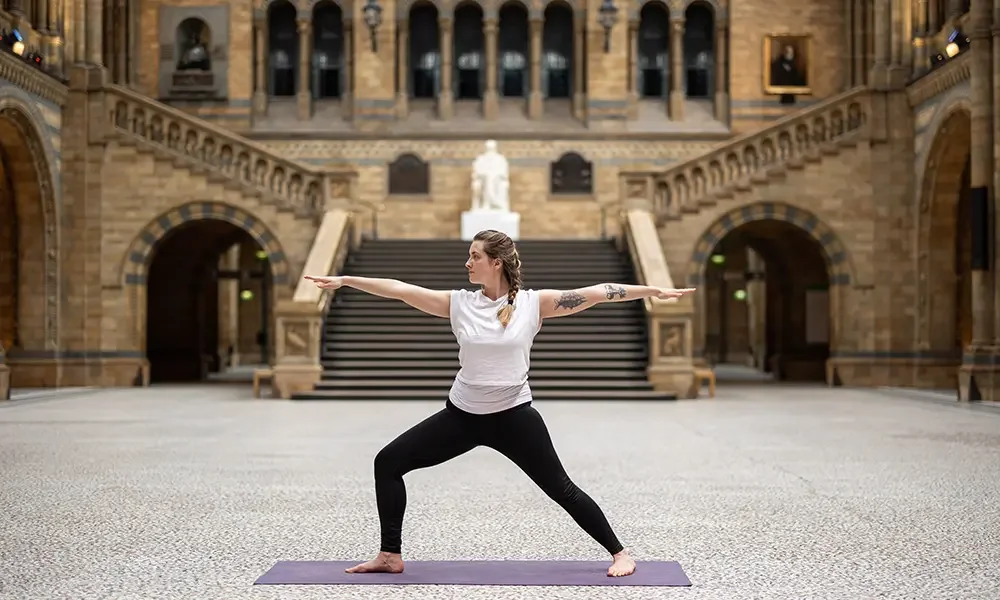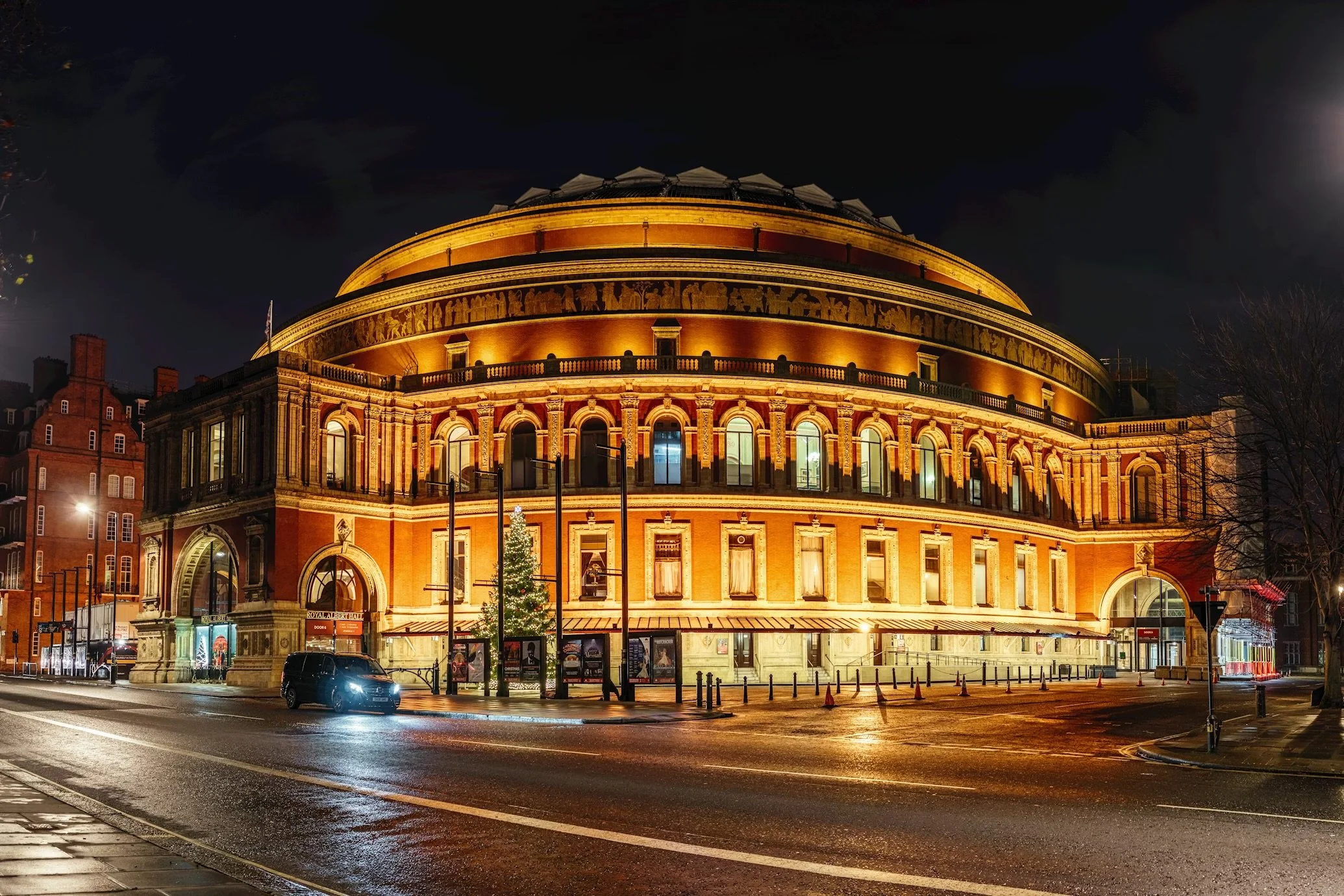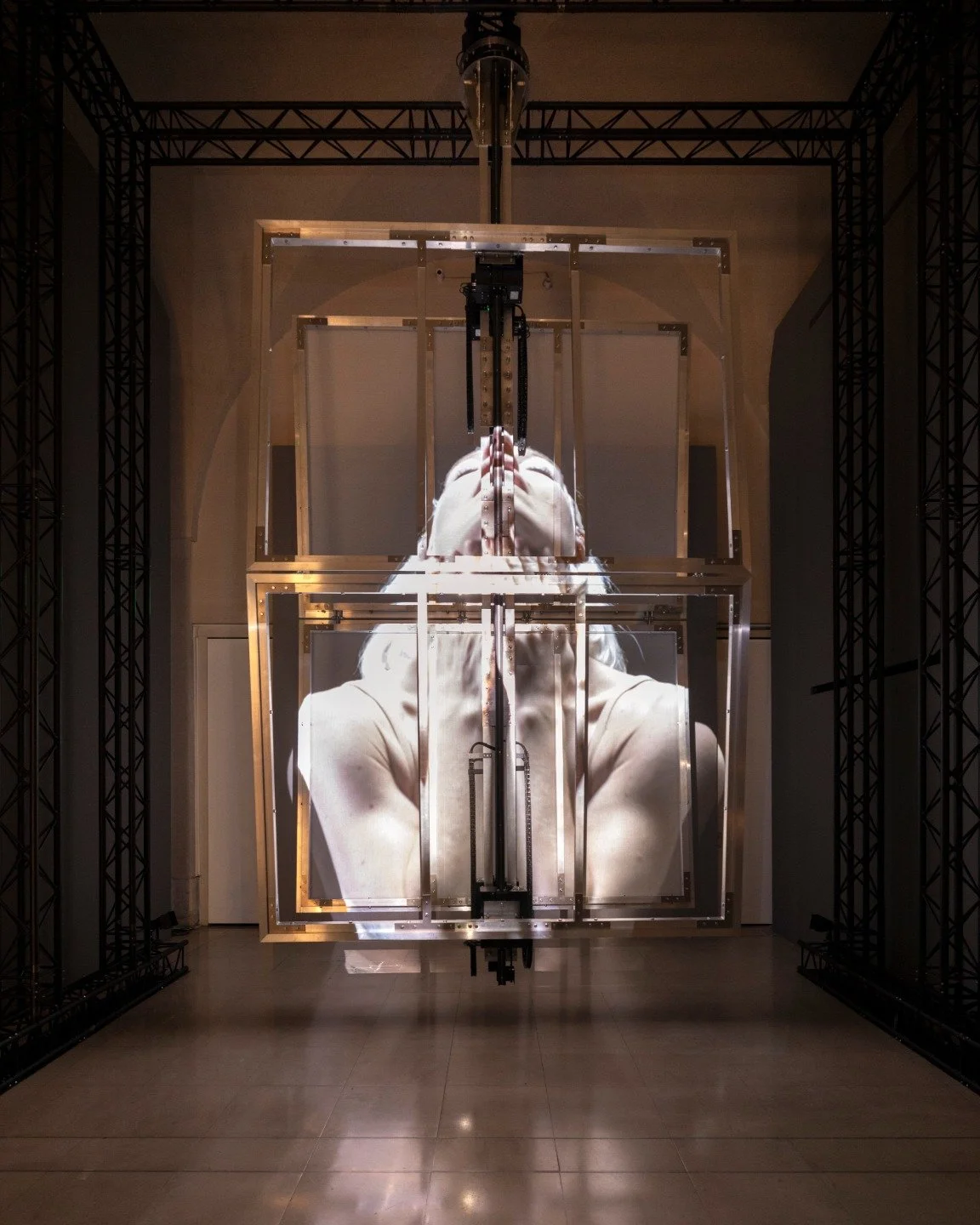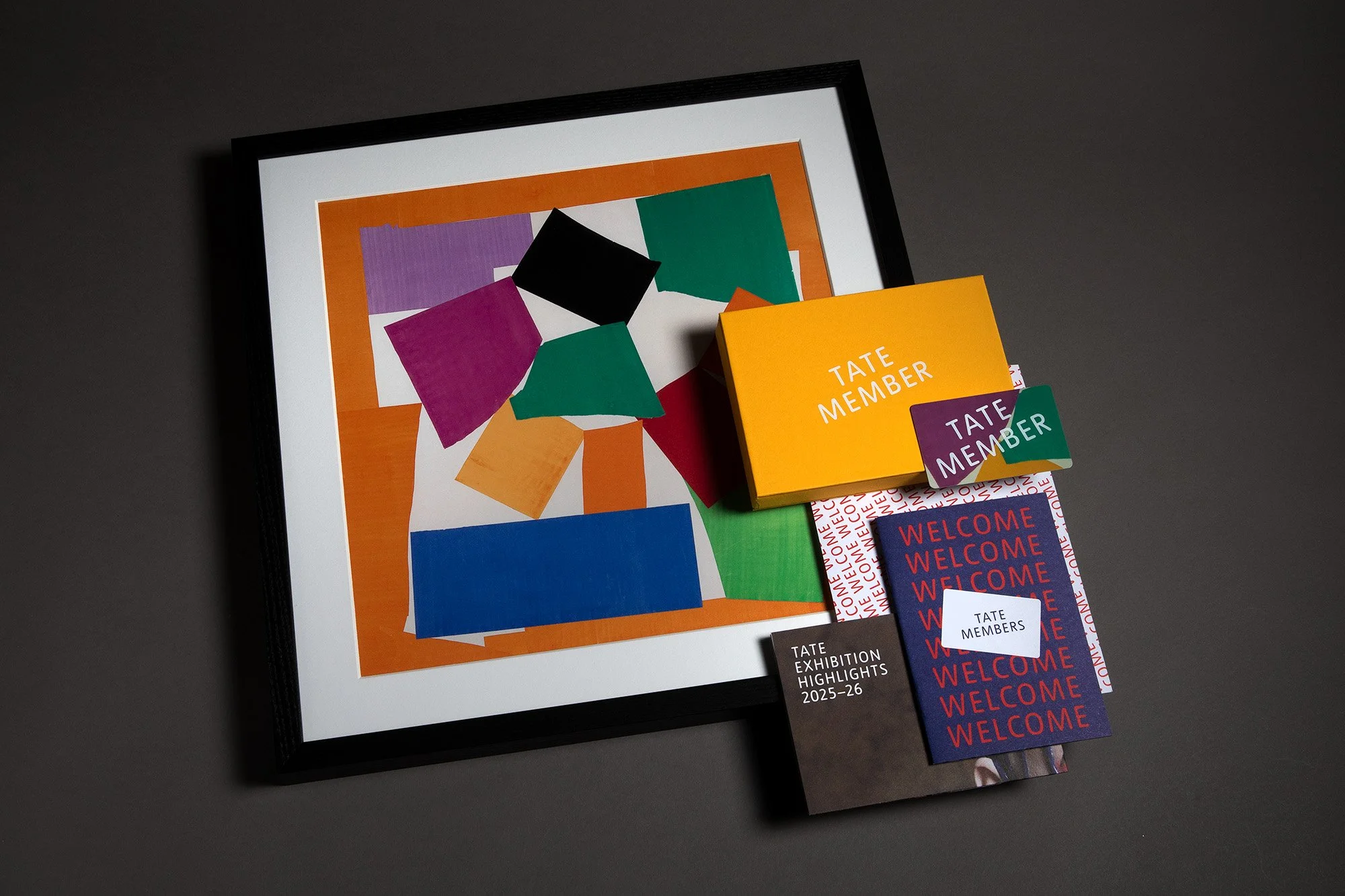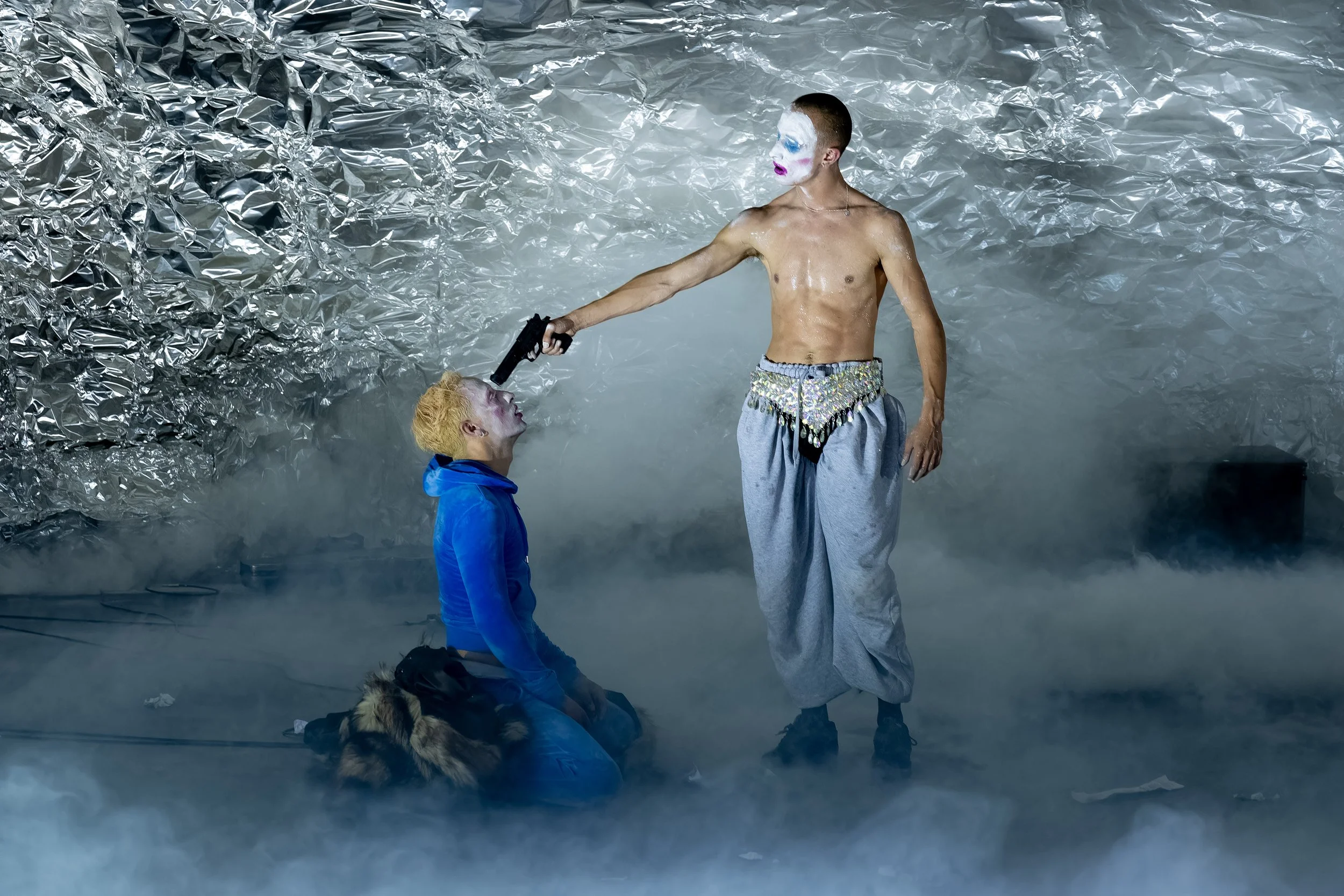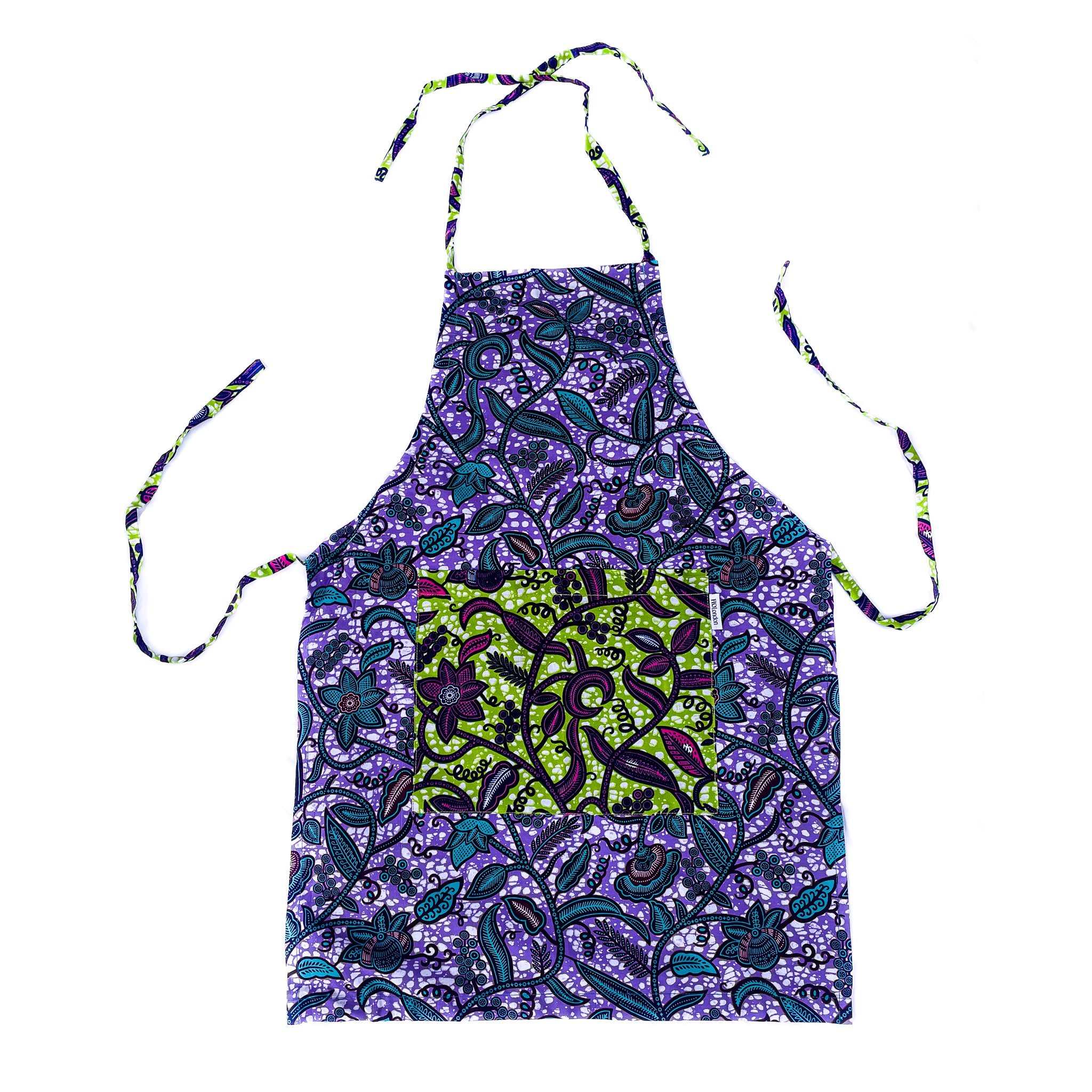Over 80,000 items spanning six decades of David Bowie's career to be made available to the public
The Victoria & Albert Museum has announced it will secure the archive of David Bowie for the nation – revealing the creative processes of one of the most pioneering and influential figures in the history of live and recorded music, film, fashion and beyond.

Image: David Bowie as The Thin White Duke, Station to Station Tour, 1976 © John Robert Rowlands.jpg
From 2025, the archive will be made available to the public, from fans to school children and researchers, through the creation of The David Bowie Centre for the Study of Performing Arts at V&A East Storehouse, in Stratford’s Queen Elizabeth Olympic Park. The acquisition and creation of The Centre has been made possible thanks to the David Bowie Estate and a generous donation of £10m from the Blavatnik Family Foundation and Warner Music Group.
Encompassing more than 80,000 items, the archive traces Bowie’s creative processes as a musical innovator, cultural icon, and advocate for self-expression and reinvention from his early career in the 1960s to his death in 2016. Alongside the creation of the new Centre, the gift will support the ongoing conservation, research, and study of the archive.
Spanning Bowie’s career, the archive features handwritten lyrics, letters, sheet music, original costumes, fashion, photography, film, music videos, set designs, Bowie’s own instruments, album artwork and awards. It also includes more intimate writings, thought processes and unrealised projects, the majority of which have never been seen in public before.
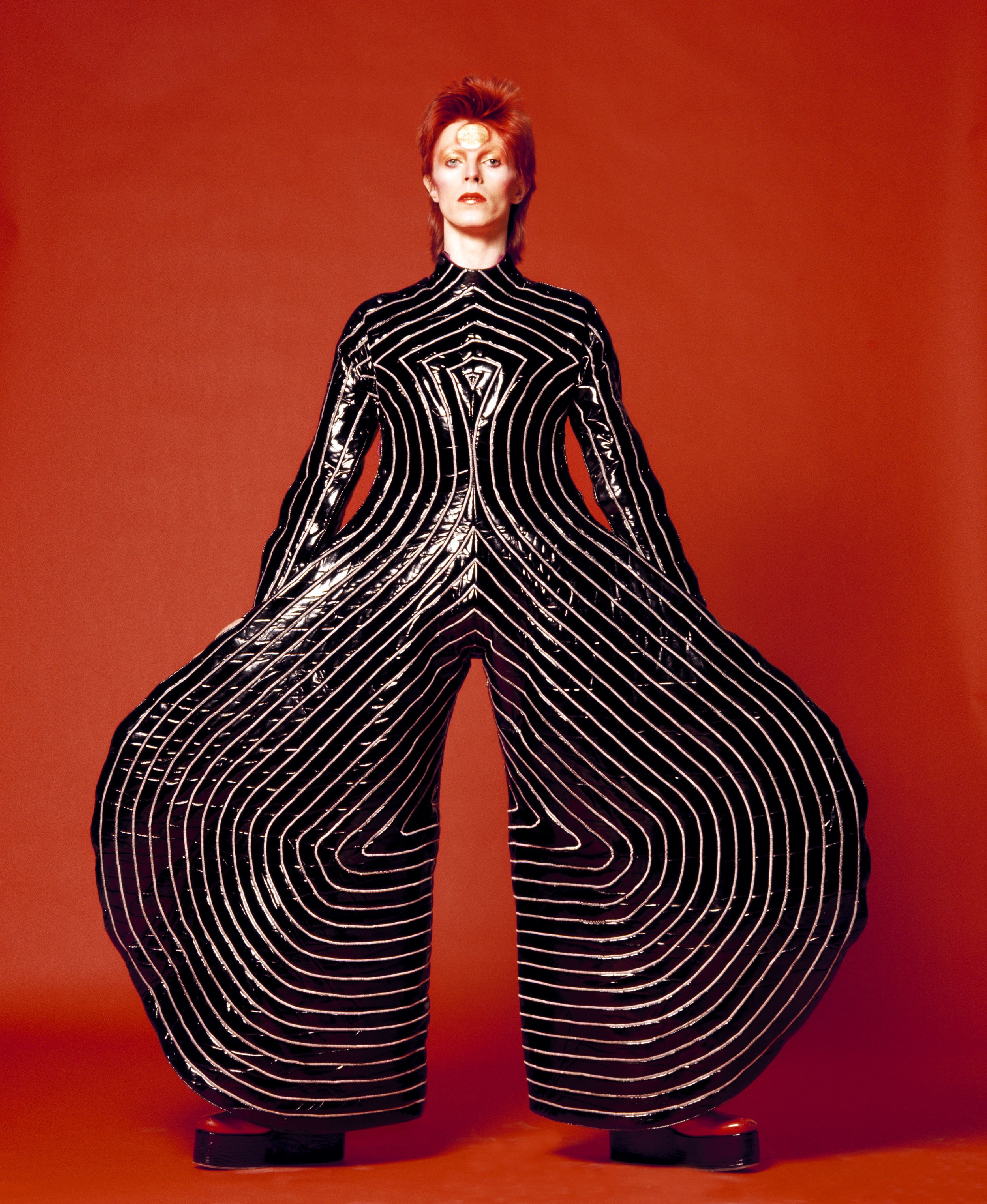
Image: Striped bodysuit for Aladdin Sane tour, 1973 Design by Kansai Yamamoto Photograph by Masayoshi Sukita © Sukita The David Bowie Archive 2012.
Highlights include stage costumes such as Bowie’s breakthrough Ziggy Stardust ensembles designed by Freddie Burretti (1972), Kansai Yamamoto’s flamboyant creations for the Aladdin Sane tour (1973) and the Union Jack coat designed by Bowie and Alexander McQueen for the Earthling album cover (1997). The archive also includes handwritten lyrics for songs including Fame (1975), “Heroes” (1977) and Ashes to Ashes (1980), as well as examples of the “cut up” method of writing introduced to Bowie by the writer William Burroughs. Additionally, the archive holds a series of intimate notebooks from every era of Bowie’s life and career.
The archive also includes a photo collage of film stills from The Man Who Fell to Earth (1975-76), directed by Nicolas Roeg and featuring Bowie, and over 70,000 photographs, prints, negatives, large format transparencies, slides and contact sheets taken by some of the 20th century’s leading photographers from Terry O’Neill to Brian Duffy and Helmut Newton. Among other highlights are instruments, amps, and other equipment, including Brian Eno’s EMS Synthesizer from Bowie’s seminal Low (1977) and “Heroes” albums and a Stylophone – a gift from Marc Bolan in the late 1960’s, used on Bowie’s seminal Space Oddity recording.
The David Bowie Archive joins the V&A’s Theatre & Performance collections, which includes the archives of influential individuals and organisations, from Vivien Leigh to Peter Brook, Akram Khan Dance Company, The Royal Court Theatre and Glastonbury Festival. The acquisition follows the V&A’s ground-breaking 2013 exhibition, David Bowie Is…, which marked the first time a museum had been given unprecedented access to the David Bowie Archive. The exhibition was seen by over two million people around the world as part of its international tour, becoming one of the V&A’s most popular exhibitions of all time.
Discover a guide to some of the artist talks, as well as curator- and architecture-led discussions, to be on your radar in London in early 2026…
This week in London, not-to-miss events include the T.S. Eliot Prize Shortlist Readings, the final performances of David Eldridge’s End, the return of Condo London, new exhibitions, classical concerts, a film release, creative workshops, wellness sessions, and a standout food opening in Covent Garden with Dim Sum Library…
Plant-based cooking gets the Le Cordon Bleu treatment in a new series of London short courses…
January is your final opportunity to catch some of London’s most exciting and talked-about exhibitions of 2025. Spanning fashion, photography, contemporary sculpture and multimedia, a diverse range of shows are drawing to a close across the city…
As the new year begins, London’s cultural calendar quickly gathers momentum, offering a packed programme of exhibitions, festivals, performances and seasonal experiences throughout January. Here is our guide to things you can do in London in January 2026…
Condo London returns in January 2026 as a city‑wide, collaborative art programme unfolding across 50 galleries in 23 venues throughout the capital, from West London and Soho to South and East London. This initiative rethinks how contemporary art is shown and shared, inviting London galleries to host international…
The Southbank Centre has announced Classical Mixtape: A Live Takeover, a one-night-only, multi-venue event taking place in February 2026, bringing together more than 200 musicians from six orchestras across its riverside site…
This week in London features late-night Christmas shopping on Columbia Road, festive wreath-making workshops, live Brazilian jazz, mince pie cruises, theatre performances, art exhibitions, a Christmas disco, and volunteering opportunities with The Salvation Army.
Discover London’s unmissable 2026 fashion exhibitions, from over 200 pieces of the late Queen’s wardrobe at The King’s Gallery to the V&A’s showcase of Elsa Schiaparelli’s avant-garde designs and artistic collaborations…
Marking her largest UK project to date, Sedira’s work will respond to the unique architectural and historical context of the iconic Duveen Galleries, offering audiences an experience that merges the political, poetic, and personal…
This week in London, enjoy festive events including Carols at the Royal Albert Hall, LSO concerts, designer charity pop-ups, late-night shopping, art exhibitions, film screenings, foodie experiences, last-chance shows, and volunteer opportunities across the city…
Explore Belgravia this Christmas with a festive pub crawl through London’s most charming historic pubs, from The Grenadier’s cosy mews hideaway to The Nags Head’s quirky classic tavern…
From the joys of Christmas at Kew to the lively Smithfield meat auction, and from major concerts and ballets to intimate workshops and family-friendly trails, the city offers an extraordinary mix of experiences. This guide brings together the very best of Christmas in London…
This guide highlights some of the must-see art exhibitions to visit over the festive period in London, including the days between Christmas and New Year’s. From major retrospectives of international masters such as Kerry James Marshall, Wayne Thiebaud, and Anna Ancher, to engaging contemporary works by Danielle Brathwaite-Shirley, Jennie Baptiste, and Tanoa Sasraku…
London’s cultural scene, a gallery or museum membership is the perfect alternative to another pair of socks. From unlimited access to exhibitions and exclusive events to discounts in shops and cafés, these memberships offer experiences that can be enjoyed throughout the year, while also supporting the vital work of arts organisations…
Your guide to London’s can’t-miss events this week, 17–23 November 2025, from Cabaret Voltaire live at ICA to Ballet Shoes at the National Theatre and The Evolution of UK Jazz at the Barbican…
Charlotte Winifred Guérard is a London-based artist and recent graduate of the Royal Academy of Arts School, where she was recognised as a Paul Smith’s Foundation scholar for her artistic achievement. Her work has been exhibited at the Royal Academy, Coleman Project Space, Fitzrovia Gallery, Messums and Palmer Gallery, and she has completed prestigious residencies including…
This week in London, you can enjoy festive ice skating, Christmas lights, jazz and classical concerts, and a range of art exhibitions. Highlights include Skate at Somerset House, Christmas at Kew, the EFG Jazz Festival, and the Taylor Wessing Photo Portrait Prize 2025…
From the 6th to the 9th of November, the leading West African art fair Art X Lagos celebrates its 10th birthday at the Federal Palace on Victoria Island. Founded by Tokini Peterside-Schwebig in 2016, the fair has become an unmissable event in the global art calendar, attracting galleries from over 70 countries and participants from 170 countries since its launch…
If you’re after something bold, queer and completely uncategorisable this November, you need to know about KUNSTY, the Southbank Centre’s brand new four day performance series running from 5-8 November 2025…


